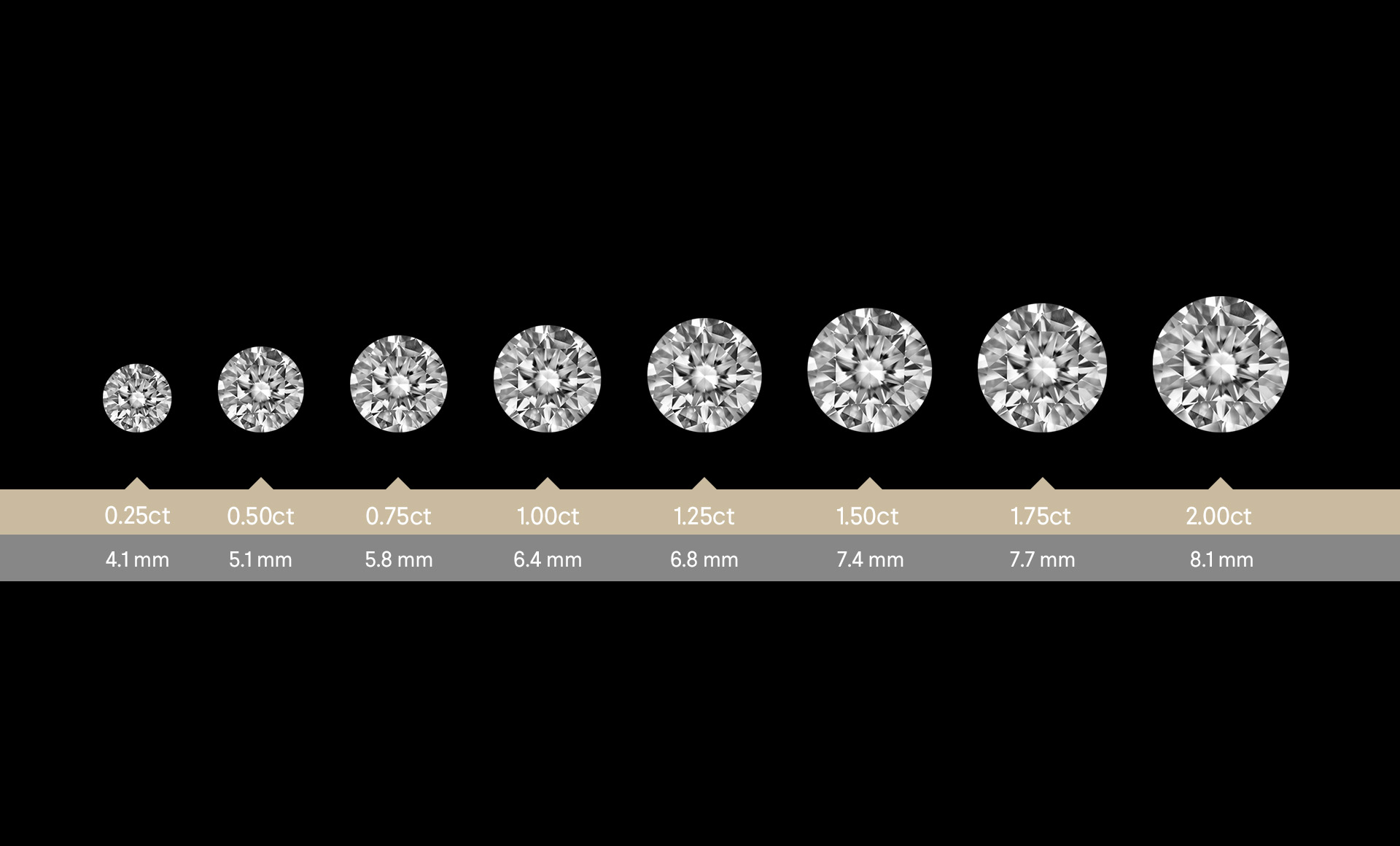Carat. The size of your carbon footprint.
Last and the easiest of the 4 Cs to see, the Carat measures the weight of a diamond. Want to know why diamonds are so valuable? Because it takes 250 tons of rock to produce just 1.00ct.
Carat. Not karat.
First point to note: carat has absolutely nothing to do with karat, which is a measure of gold purity. The term comes from the Greek for “fruit of the carob tree” (Wikipedia). The seeds of the carob pod were almost always identical in weight – and a natural standard of measurement. Today, the metric carat weighs 200 milligrams (0.2 grams) and has become universally accepted. For absolute precision, carats are subdivided into 100 points. So a diamond weighing 0.50 carats, for example, is referred to as a ‘fifty pointer.’
Carat pricing
A diamond cutter’s highest priority is to maximise the carat weight of a diamond. The larger the diamond, the rarer and more expensive it will be, with prices increasing exponentially as the diamond carat weight increases. Critical carat weights are: 0.30ct, 0.40ct, 0.50ct, 0.70ct, 0.90ct 1.00ct, 1.50ct, 2.00ct, 3.00ct, 4.00ct, 5.00ct, 10.00ct.
The perfect diamond is a balancing act
When shopping for a diamond, and assuming you have a budget, you’ll tend to balance the carat on one side against the other three Cs on the other. So as you go up in weight, you may have to dial down one or more of the colour, clarity, or cut.
Weight vs Size
Weight is important because the more a diamond weighs, the more it is worth. But when a diamond is set in jewellery, admirers tend to judge the size rather than the weight. In a perfect, well-cut diamond—such as those used by Montluc—the weight and size will be proportional. In other words, if the surface is big, the diamond is heavy. On the other hand, a diamond that looks big but weighs little is just badly cut.

That’s where Montluc comes into its own.
Montluc jewellery is specifically designed and beautifully crafted to expose the maximum possible surface area of the diamond. Which means you show more… sparkle more… without having to pay more.
» Check out our approach to pricing to see how we offer such stunning value
Cut before carat
The cut is the one C that brings a great diamond into its own – and the secret behind the sparkle. The quality and skill of the cut ranges from Poor to Excellent on official Gemological Institute of America (GIA) gradings. Diamonds that are cut very well will also tend to have less depth and more spread, which has the effect of making them look visually larger than their carat weight would suggest. Excellent is the highest grade and is met only by the the top 3% of the world’s diamonds. Montluc is extremely rare in only ever using a standard of quality that goes two steps further. Our Triple Excellent cut is the best there is, guaranteeing that every diamond is impeccably polished and aligned as well as perfectly cut. After all, why invest in the biggest diamond you can…when you can go for the best?
ATELIER
Dream of creating your own bespoke piece of diamond jewellery? Perhaps a ring showcasing a diamond of a certain carat weight? The Montluc Atelier can make it reality, a custom-design service that works with you every step of the way to craft your unique legacy.

Small diamonds
Our small diamonds under 0.20ct all meet the top grades.
Colour: D-F
Clarity: Flawless to VVS2
Cut: Always Triple Excellent



Large diamonds
Our larger diamonds over 0.20ct all meet the very top grades.
Colour: D
Clarity: Internally Flawless
Cut: Always Triple Excellent


